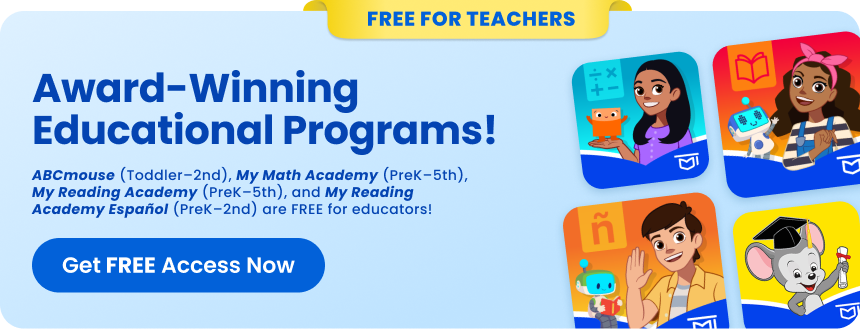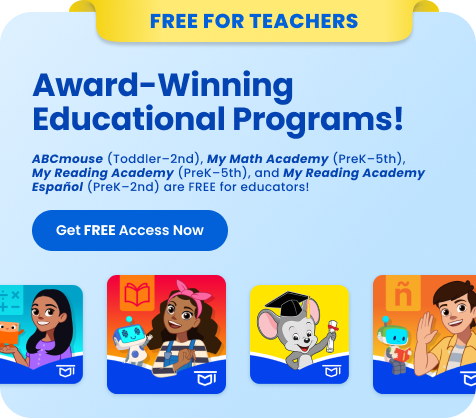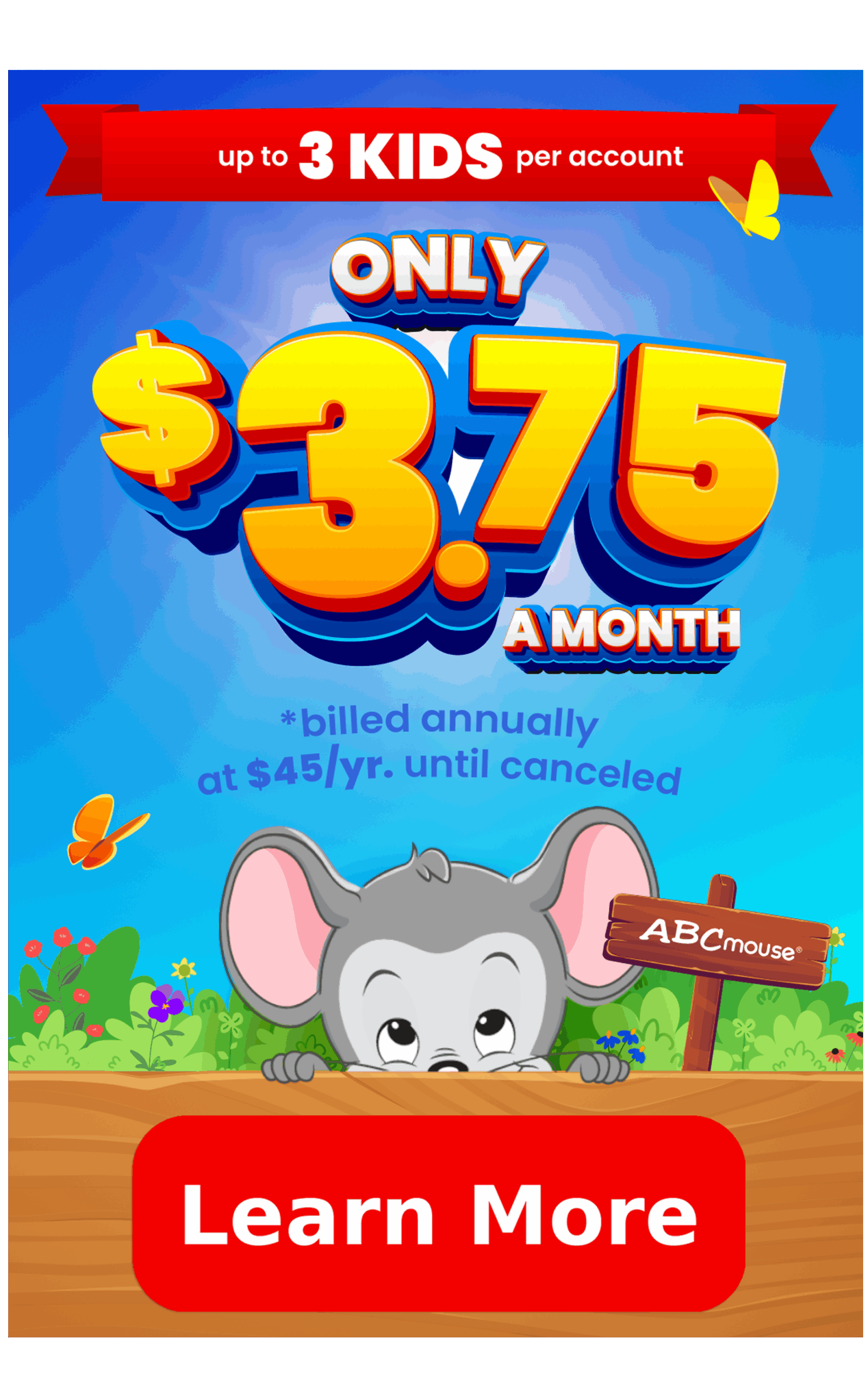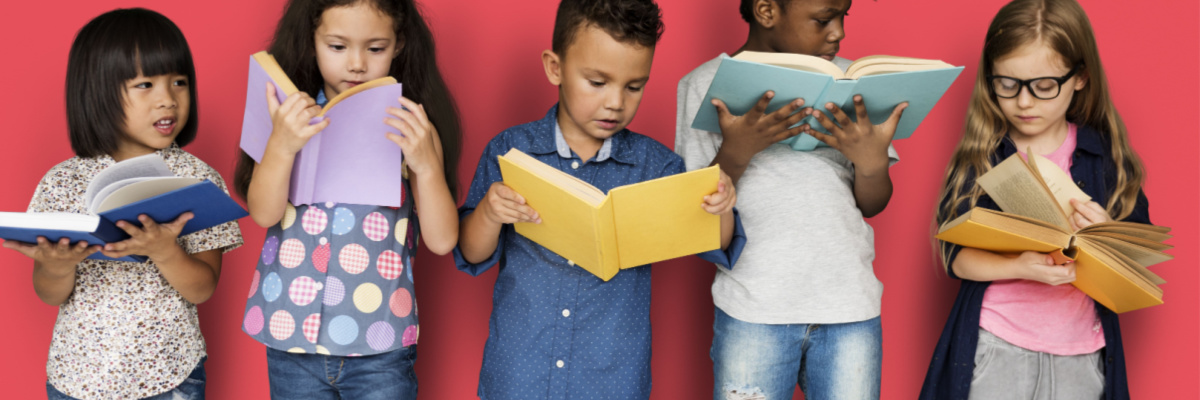
How to Teach Phonics to Kindergarteners
Tips and activities to help make learning phonics fun for your kindergartener.
When your child reaches kindergarten age, it’s time to start focusing on learning to read in earnest. Before they move on to first grade, they’ll need to have mastered basic phonics so they’ll be ready to apply those skills as they continue their reading journey.
But what is this concept exactly, and do you teach phonics to kindergarteners?
Phonics Vs. Phonemic Awareness
Phonics
Phonics is a way of teaching kids to read by focusing on the letters in a word and their corresponding sounds.
In kindergarten, kids should master breaking words into individual sounds, and putting sounds together to form new words.
By the time they finish this important year of learning, students should be able to decode (sound out) simple 2 and 3 letter words using their basic phonics skills.
Phonemic Awareness
Building a child’s phonemic awareness can support them in phonics instruction.
Phonemic awareness is like having a special pair of ears that can hear and manipulate the tiniest sounds in words.
Have you ever noticed how you can say “cat” and hear the separate sounds – “cuh,” “aah,” and “tuh”? Think of words as puzzles made of sounds, and you’re the puzzle solver.
Note: Many experts recommend teaching letter phonics in a specific order, rather than alphabetically.
A goal of learning phonics is to get kids reading simple words more quickly, helping emergent readers recognize the progress they’re making. Opinions differ on the exact best order to teach letter phonics; here are few to consider:
- Wiley Blevins Scope and Sequence
- Penn State Literacy Instruction Letter-Sound Correspondence Sequence
- The Measured Mom’s Best Order for Teaching Letters
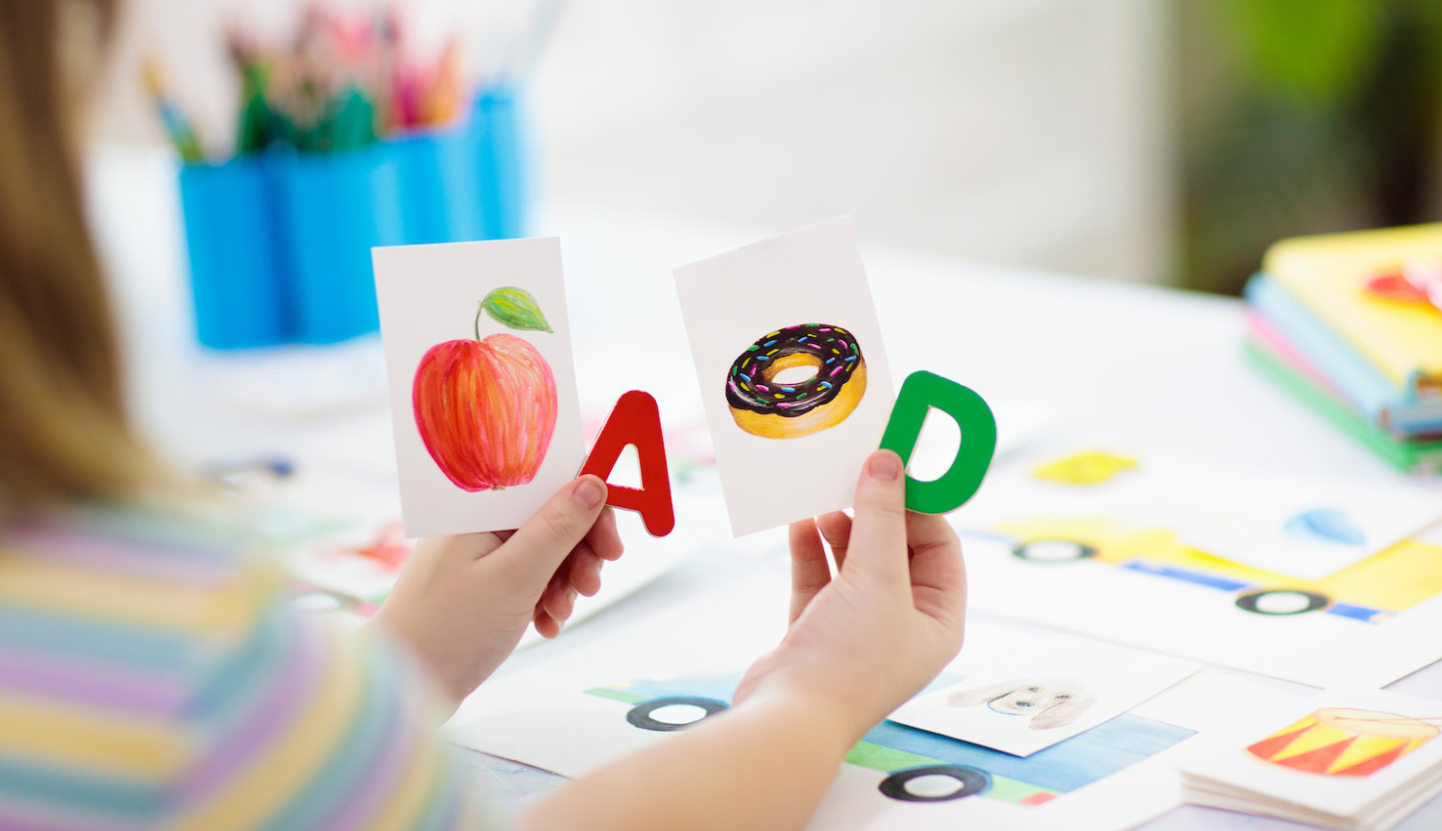
Tips for Teaching Phonics to Kindergarteners
Phonics instruction focuses on the relationship between letters and their associated sounds (phonemes), establishing connections between letter formations and sound patterns for early readers. It’s a critical part of building literacy skills. Let’s explore what children typically learn about phonics in kindergarten and a few ideas for helping to reinforce their phonics skills.
1. Make Letter-Sound Correspondence Automatic
Phonics breaks words into their constituent sounds, known as phonemes. For instance, the word “ball” has three phonemes: /b/ /a/ /l/.
There are 44 phonemes in the English language, some of which are made up of multiple letters. For example, in the word “gather”, there are four phonemes: /g/ /a/ /th/ /er/.
Kids don’t need to be able to write out words like this, but they do need to be able to hear the individual sounds in a word, and match them with corresponding letters.
These correlations should come automatically, without kids needing to give them much thought. In other words, when they see a letter, they should know the sound(s) it can make.
According to research, it’s also helpful for your child to see the letters as they learn the sounds. As explained on Future-ed.org, the National Reading Panel analyzed 52 studies, revealing that “phonemic awareness instruction was almost twice as effective when letters were presented along with the sounds.”
Letter-Sound Correspondence Activities
- Run letter races. Lay out letter flashcards in random order on the floor (or use sticky notes). Remember to use both upper and lowercase letters.
Kids start at the beginning, and as they step on each letter, they say the sound it makes. If it makes more than one sound, they must say all the possible sounds before they move on. Time your child, then see if they can beat their best scores each time they play.
Check out this article for more letter sound activity ideas.
- Swat the letter. Give kids an old fashioned flyswatter, then lay out letter cards on the table or floor in random order. Call out a letter sound, and see how quickly kids can “swat” the corresponding letter.
- Go on a sound hunt. Draw a letter flashcard, and have your child read the letter and say the sound(s) it makes. Then, challenge them to find at least five items in the room that use that sound at the beginning, middle, or end of the word.
Learn Phonics with ABCmouse’s Reading Program
ABCmouse’s reading program is packed with hundreds of activities designed to help young children build foundational phonics skills. Through a personalized learning path, kids can progress at their own pace, making learning fun and engaging. Dive into the ABCmouse Reading Program and start your phonics journey sign up today!

Then just $14.99 a month until canceled
2. Learn Vowels and Consonants
While kids don’t necessarily need to know words like “phoneme,” they do need to be able to recognize which letters are vowels and which are consonants. What’s more, they need to learn that vowels can make both long and short sounds. They’ll learn the rules for when to use those long and short sounds as they build their skills, but for now, they need to know the possible sounds for each.
Vowel and Consonant Activities
- Bounce letter balls. Label ping pong balls each with an individual letter. Set up two bins, one for vowels and one for consonants. Kids choose a ping pong ball, then see if they can throw or bounce the ball into the correct bin.
- Explain that “long vowels say their name.” This simple tip reminds kids that when a vowel in a word sounds just like the letter name, it’s a long vowel. Say a variety of words, and have kids isolate and sound out the vowel to determine if it’s short or long.
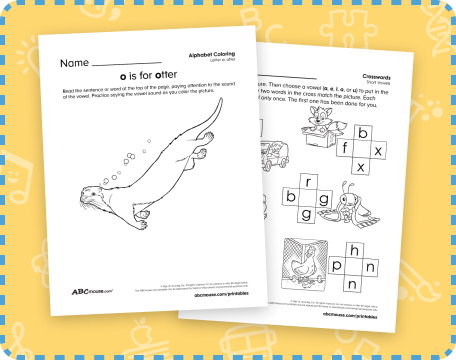
- Try out our Vowel Learning worksheets. These engaging worksheets cover vowel coloring pages, long and short vowel sounds, and vowel teams. They offer a fun way for kids to practice learning different vowel sounds, aiding in reading and spelling skills.
3. Introduce CVC Words
The first words most kids learn to read are CVC words: consonant-vowel-consonant, like “cat” and “hot.” In most CVC words, the vowels use their “short” sounds, and consonants are pronounced in the “normal” way. This makes these words easy to sound out, a skill known as decoding.
CVC Words Activities
- Squish playdough letters. Roll three small balls of playdough, and give your child three letter stamps or beads that spell a CVC word. One by one, have them stamp one letter into each ball of dough, saying the sound it makes. Then, have them squish each letter with their finger or thumb, saying the sounds together more quickly. Finally, have them say the whole word and roll all the playdough into one big ball.
- Find nonsense words. Give your child alphabet beads or blocks, and ask them to put together CVC combinations to see what words they can find. For instance, they might spell “BOJ,” but as they sound it out, they’ll realize that’s not a real word. (This is also a fun way to build vocabulary!)
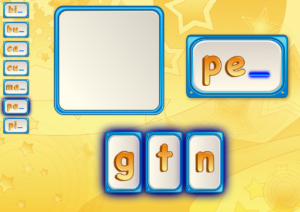
- Play “Last Letter in Line” on ABCmouse. This game invites children to change the final consonant in CVC words, creating new words and meanings. Accompanied by a friendly character, players enhance their phonics skills, word recognition, and understanding of word structure. “Last Letter in Line” is part of ABCmouse’s comprehensive learning path, designed to reinforce and develop language skills through interactive play.
- Make rhyming words. This is fun to do with alphabet beads or magnets. Lay out a CVC word, then remove the first letter. Ask your child to try substituting additional letters to find words that rhyme. Make a list as they go, then use those words to write a silly poem.
4. Tackle Beginning Blends
In a letter blend, two letters work together to make one smooth sound. Example: Contrast the words “balloon” and “bloom.” In “bloom,” the B and L are blended together into one sound, /bl/. Kindergarteners are usually ready to start learning words that start with basic blends, formed by joining the individual consonant sounds together.
Depending on their aptitude, you may want to work on digraphs, which are letter blends that create entirely new sounds. Blends like /th/, /sh/, and /ch/ make their own sounds. Kids will need to learn to recognize digraphs and the sounds they make automatically as they become fluent readers.
Prefix and Suffix Activities
- Play “Austin and Scout: The Well of Prefixes” on ABCmouse. Help Austin and Scout escape a well by choosing the correct prefix and root word combinations. This educational game enhances children’s understanding of word formation and vocabulary, forming part of ABCmouse’s interactive learning path.
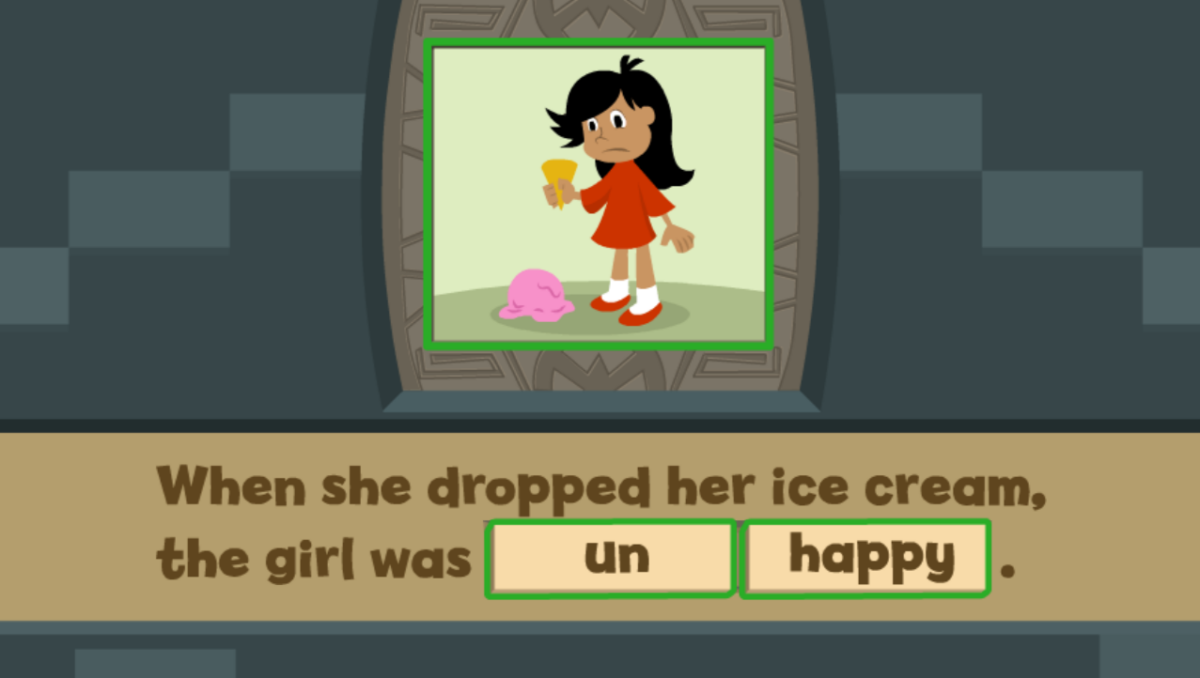
- Make prefix flip books. Take a tip from Book Units Teacher and make some easy flipbooks. Cut strips of paper and staple them together at the right end. Make the bottom strip longer than the strips on top, and write a prefix at the beginning so it’s always showing. On the other strips, write base words that go with the prefix. Kids flip the pages and read each new word they’ve created.
- Wave suffix wands. Cut out circles of colorful paper and write different suffixes on each. Then, tape each circle to the end of a drinking straw to create “suffix wands.” Have your child hold a suffix wand up to a base word, and read the new word they’ve made.
- Assemble prefix and suffix puzzles. Use pieces from old puzzles, by either painting the fronts white or simply turning them over and writing on the backs. Fit two pieces together and write the prefix or suffix on one, and the base word on the other. Ask your child to match up the pieces and read the resulting words.
- Practice with worksheets. Enhance your child’s understanding of prefixes and suffixes with our free printable worksheets designed for kindergarten and up. These worksheets provide structured practice, covering a variety of phonics concepts like vowel sounds, consonant blends, digraphs, and more.
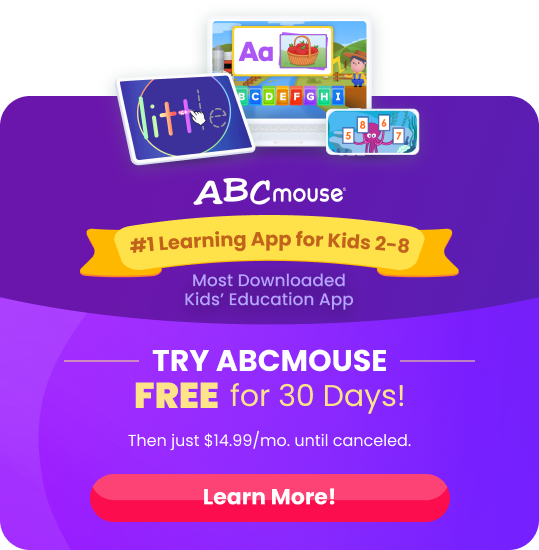
Keep Learning!
For more fun first grade learning, check out:
ABCmouse’s expert advice review process:
Our team of ABCmouse Curriculum Experts, made up of talented professionals in early childhood education and development, take a close look at educational content and learning claims. They put in the effort to make sure our information is accurate and current. We have a certified educator or another respected authority review the content, matching their expertise with the topic at hand. They’ll make sure the content is thorough and follows the latest research and educational guidelines. If they think we can make things even better, they’ll chat with our editorial team, and we’ll make those improvements right away. Only after a reviewer gives their thumbs-up does a piece of content get the official stamp of approval in the byline.
Legal Disclaimer: Any information, materials, or links to third-party resources are provided for informational purposes only. We are not affiliated with and do not sponsor/endorse these third parties and bear no responsibility for the accuracy of content on any external site.


